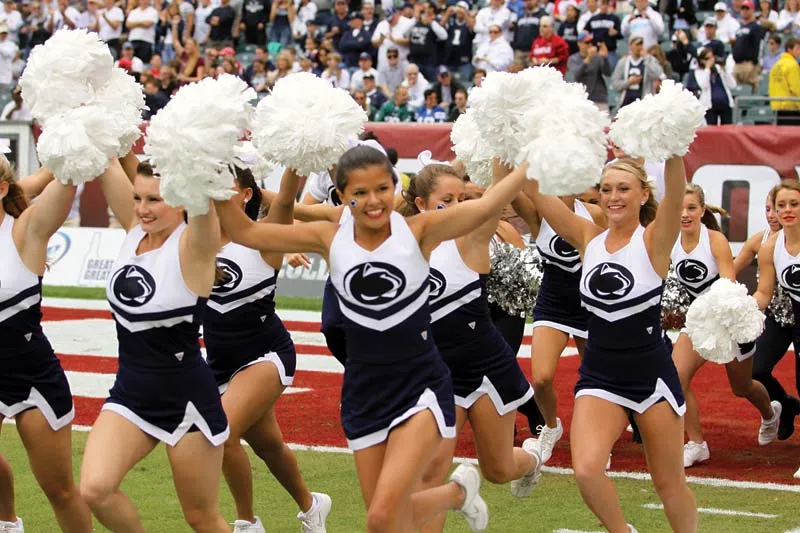Cheerleading: Beyond the Cheers

Cheerleading: Beyond the Cheers
Cheerleading, often associated with sideline chants and acrobatic stunts, has evolved into a dynamic sport that blends athleticism, teamwork, and creativity. While its origins trace back to the late 19th century in the United States, today's cheerleading encompasses far more than just cheering on teams from the sidelines. It has become a recognized sport in its own right, with competitive leagues, intricate routines, and a passionate community.
A Rich History
Cheerleading's roots lie in the enthusiastic support of sports teams, primarily in American football. The first organized cheerleading event is credited to a University of Minnesota student, Johnny Campbell, who directed a crowd in a chant to support their team in 1898. From these humble beginnings, cheerleading quickly spread across campuses and eventually took on more complex routines and performances.
From Sidelines to Center Stage
Modern cheerleading has undergone a transformation from simple chants and pom-poms to intricate routines that include tumbling, stunts, and dance. Cheerleaders are skilled athletes who train rigorously in gymnastics, dance, and strength conditioning to perform their routines with precision and flair.
Competitive cheerleading emerged in the 1980s, formalizing the sport and establishing standardized rules and judging criteria. Today, competitive cheerleading events showcase teams from around the world, each vying for top honors with high-energy performances that captivate audiences and judges alike.
The Athleticism of Cheerleading
Cheerleading demands a unique blend of skills. Athletes must be strong and agile to execute flips, twists, and jumps flawlessly. They must also possess excellent coordination and timing to synchronize their movements with their teammates. Beyond physical prowess, cheerleaders must demonstrate teamwork, trust, and communication skills to ensure the safety and success of their performances.
Safety and Regulation
Safety is paramount in cheerleading due to the high-risk nature of stunts and tumbling. Teams adhere to strict guidelines and are coached by professionals who prioritize proper technique and skill progression. The International Cheer Union (ICU) and other governing bodies continuously update safety protocols to minimize the risk of injury and promote a safe environment for all participants.
Community and Spirit
Cheerleading fosters a strong sense of community and camaraderie among its participants. Teams often develop deep bonds through shared victories, challenges, and countless hours of practice. Cheerleaders support not only their own team but also promote sportsmanship and school spirit at events and competitions.
Beyond the Field
Cheerleading has transcended its traditional role on the sidelines to become a global phenomenon. Its influence extends beyond sports arenas, with cheerleading-themed movies, television shows, and even cheerleading-inspired workouts gaining popularity. The dedication and passion of cheerleaders have made it a respected and celebrated activity worldwide.
Conclusion
Cheerleading is more than just cheers and chants—it is a vibrant sport that celebrates athleticism, creativity, and community. From its humble beginnings to its current status as a competitive and globally recognized activity, cheerleading continues to evolve and inspire new generations of athletes. Whether on the sidelines or at the forefront of a competition, cheerleaders embody the spirit of teamwork, dedication, and passion that defines this dynamic sport.
- Arts
- Business
- Computers
- Games
- Health
- Home
- Kids and Teens
- Money
- News
- Recreation
- Reference
- Regional
- Science
- Shopping
- Society
- Sports
- Бизнес
- Деньги
- Дом
- Досуг
- Здоровье
- Игры
- Искусство
- Источники информации
- Компьютеры
- Наука
- Новости и СМИ
- Общество
- Покупки
- Спорт
- Страны и регионы
- World


